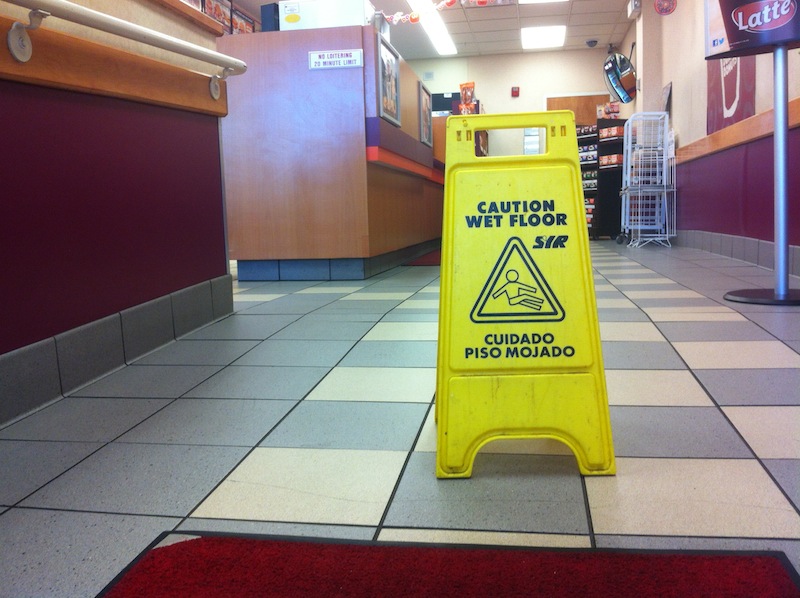How retail operations are benefiting from rapid 3D data capture
CHICAGO – “If somebody had told me five years ago I’d have a laser scanner I could sell into the retail market,” said Duane Redding, head of Redding Forensics, “I’d still be laughing. But it’s becoming accessible and it’s becoming acceptable. It’s going to be the cornerstone of what we do going forward.”
How is that possible? Consider the work Redding does with loss prevention professionals at large retail chains across the country. A random retail customer slips and falls. The security and loss-prevention department helps the customer, makes sure he or she is okay, and then documents the scene as well as possible. Maybe they take some photos and draw up a basic diagram of what happens.
Two months later, a lawyer files a suit on behalf of the injured customer and the retail operation calls in Redding to provide expert testimony on what “really” happened.
“By then how many thousands of people have gone through? The scene integrity is gone,” Redding said, “and even if the same asset protection person is there, they probably took a couple months of community college for asset protection. How good is their report going to be?
“That’s not really a good position to be in.”
Redding was already certifying law enforcement agencies in the use of laser scanning with Redding parent company 3CON (they worked with their 35th department this month) for scene documentation and accident site clearing and it struck him that laser scanning could save retail operations big money if used to immediately document these slip-and-fall scenes.
“We’re talking tens of millions of dollars a year,” Redding said. “They’re paying out settlements, and they’re saying that to hire a professional accident reconstruction company to come in and do its work, with no guarantee of a win, it’s better to just write the check.”
He was working with one very large retail firm with a policy that it was better in most cases to just settle for less than $350,000 and extract a guarantee that the injured party would never sue again. The National Insurance Crime Bureau released a report in May showing 2,168 slip-and-fall claims in 2011, a 12 percent increase over 2010.
“That’s a big number,” said Redding.
Laser scanning is changing all of that. Redding put forth a scenario to his retail customers – the Wal-Marts, Targets, JC Pennys of the world: What if Redding could take a scanner; some Scene software, along with something like VisualStatement or AutoCAD; and train a group of asset protection people, either regionally or store-by-store, so they could unpack the scanner, scan the scene, register it, and transmit the data back to the home office before the day of the incident is over?
“Everybody’s eyebrows went up,” said Redding, “but they said, ‘We can’t spend $200,000 on a laser scanner.’ I said, ‘What if it’s $40,000?’”
As a Faro reseller, Redding felt he had found another market that would open to laser scanning thanks to the reduced price point. He worked with a retailer to pick 10 stores in Florida – a hot bed of slip-and-fall cases – train a handful of people and run a pilot program.
“There was immediately absolutely positive feedback,” Redding said. “They’d proven they were willing to document the scene using the latest and greatest technology and were willing to go to the wire with it court … It really soured the milk of this fraud industry. If there’s even an inkling that it’s fraudulent, defense attorneys say, ‘I’m not going up against that in a court of law.’”
It’s not hard to see how the return on investment for the scanner and software might be pretty quick. “They don’t need to fly in a professional forensics team,” Redding said. “They just need to train the AP team to collect the data. They don’t need to be law enforcement people, they just need to be certified that they were trained on the unit. They don’t even need to put the scene together. They just shoot three, four, five locations, and send the data back to the home office. But the fact that they have credentialed people, and trained by the same agency that’s teaching law enforcement … well, quite honestly, the feedback has been exceptionally positive.”
Redding said laser scan data, when combined with certified training, reliably meets both the Daubert and Frye standards for acceptable expert testimony and scientific evidence created by new technology.
“It’s really going to make accident attorneys pause,” Redding said. “They can’t cross-examine the data. It can’t lie. It doesn’t have a perspective. They can go anywhere inside of it. We’ve found that 3D laser scanning data is undefeatable. It’s the biggest challenge right now for defense attorneys since DNA, and I believe that without a doubt.”
As for the potential market for laser scanners? Wal-Mart alone has 1,300 stores in the United States.






